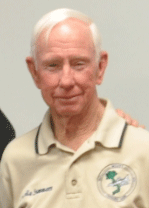Pilot Hanna Reitsch Was Problem Solver for Luftwaffe
 Nearing the end of WW2, Germany found itself without enough long-range planes, such as the Junkers 290, so it turned to planes captured from the Americans, according to Commando Otto Skorzeny in his 1950 memoir. He wanted to pull stealth gliders to destroy strategic targets in the Near East. The Germans found six B-17s that “had been put into perfect shape and were awaiting our orders in a Bavarian airport.”
Nearing the end of WW2, Germany found itself without enough long-range planes, such as the Junkers 290, so it turned to planes captured from the Americans, according to Commando Otto Skorzeny in his 1950 memoir. He wanted to pull stealth gliders to destroy strategic targets in the Near East. The Germans found six B-17s that “had been put into perfect shape and were awaiting our orders in a Bavarian airport.”
Awarded the Iron Cross First Class, pilot Hanna Reitsch had already helped the Luftwaffe with its V-1 problem: being unmanned, the plane was wildly inaccurate in terms of hitting a target. The first pilots who attempted to steer the V-1 were all killed. Reitsch determined that they couldn’t handle the high speeds, so she flew the plane herself and landed successfully.
Skorzeny turned to Reitsch when it looked like captured B-17s would be pulling his gliders behind enemy lines: “We decided that these four-motor planes should serve simply as tugs for one or more transport gliders which could land anywhere. Unfortunately the gliders at hand could not resist a speed greater than 160 miles per hour whereas the use of American bombers would entail an average speed of between 220 and 450 miles per hour. It was Professor Georgi a veteran specialist in air sailing and a very old friend of Hanna Reitsch, who helped us surmount this obstacle by constructing a glider that could resist this high speed and bear twelve men with their complete equipment.”
After setting over 40 aviation and international gliding records during and after the war, Reitsch went to Ghana in the 1960s to found a gliding school for Kwame Nkrumah. In a 1970s interview, Reitsch reaffirmed the patriotism that motivated her professionalism during the war, though lamenting what Europe has become: “And what have we now in Germany? A land of bankers and car-makers. Even our great army has gone soft. Soldiers wear beards and question orders.”
 You are invited to the Western Dakota Technical Institute in Rapid City on Flag Day, Saturday, June 14, as glider expert Charlie Summers, a much-decorated F-100 Super Sabre pilot in Vietnam, will share his knowledge of the role of gliders during World War II, starting at 9 am. Also contributing at the meeting will be USAF veteran LTC George Larson, author of “Aerial Assault into Burma” about the use of gliders in the retaking of Burma from the Japanese.
You are invited to the Western Dakota Technical Institute in Rapid City on Flag Day, Saturday, June 14, as glider expert Charlie Summers, a much-decorated F-100 Super Sabre pilot in Vietnam, will share his knowledge of the role of gliders during World War II, starting at 9 am. Also contributing at the meeting will be USAF veteran LTC George Larson, author of “Aerial Assault into Burma” about the use of gliders in the retaking of Burma from the Japanese.
 Nearing the end of WW2, Germany found itself without enough long-range planes, such as the Junkers 290, so it turned to planes captured from the Americans, according to Commando Otto Skorzeny in his 1950 memoir. He wanted to pull stealth gliders to destroy strategic targets in the Near East. The Germans found six B-17s that “had been put into perfect shape and were awaiting our orders in a Bavarian airport.”
Nearing the end of WW2, Germany found itself without enough long-range planes, such as the Junkers 290, so it turned to planes captured from the Americans, according to Commando Otto Skorzeny in his 1950 memoir. He wanted to pull stealth gliders to destroy strategic targets in the Near East. The Germans found six B-17s that “had been put into perfect shape and were awaiting our orders in a Bavarian airport.” You are invited to the Western Dakota Technical Institute in Rapid City on Flag Day, Saturday, June 14, as glider expert Charlie Summers, a much-decorated F-100 Super Sabre pilot in Vietnam, will share his knowledge of the role of gliders during World War II, starting at 9 am. Also contributing at the meeting will be USAF veteran LTC George Larson, author of “Aerial Assault into Burma” about the use of gliders in the retaking of Burma from the Japanese.
You are invited to the Western Dakota Technical Institute in Rapid City on Flag Day, Saturday, June 14, as glider expert Charlie Summers, a much-decorated F-100 Super Sabre pilot in Vietnam, will share his knowledge of the role of gliders during World War II, starting at 9 am. Also contributing at the meeting will be USAF veteran LTC George Larson, author of “Aerial Assault into Burma” about the use of gliders in the retaking of Burma from the Japanese.